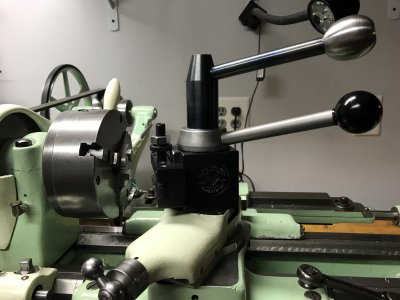- Joined
- Sep 28, 2013
- Messages
- 4,411
made some new jaws for my HF 4x6 bandsaw


more details here

 www.hobby-machinist.com
www.hobby-machinist.com


more details here

Some HF 4x6 bandsaw mods (new vise jaws, jack screw..)
thought I'd put all these pics here in one place. Finally got annoyed at the tiny crappy vise jaws on my HF 4x6 bandsaw when I couldn't cut off the last lot of QCTP holders as I couldn't hold the piece. So I dug out a nice piece of 4x4x3/8" angle iron that I found at the side of the road. Cut...
 www.hobby-machinist.com
www.hobby-machinist.com


















